#A Village Affair 1995
Explore tagged Tumblr posts
Text

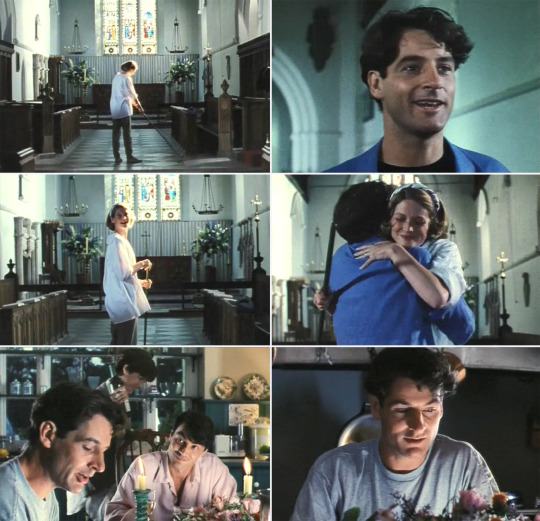

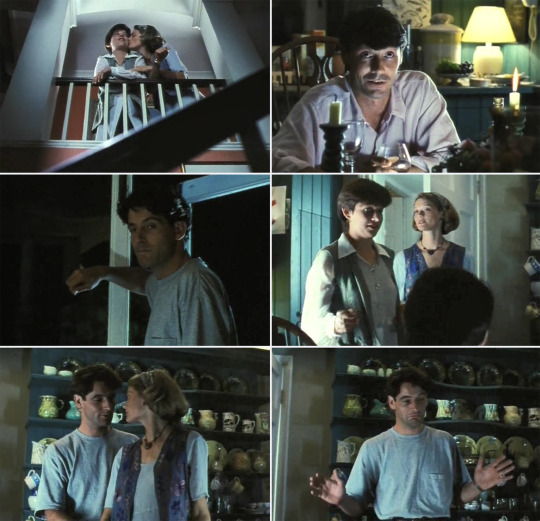

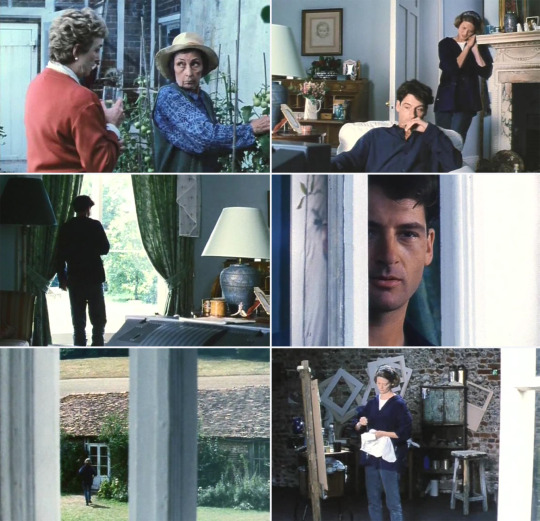
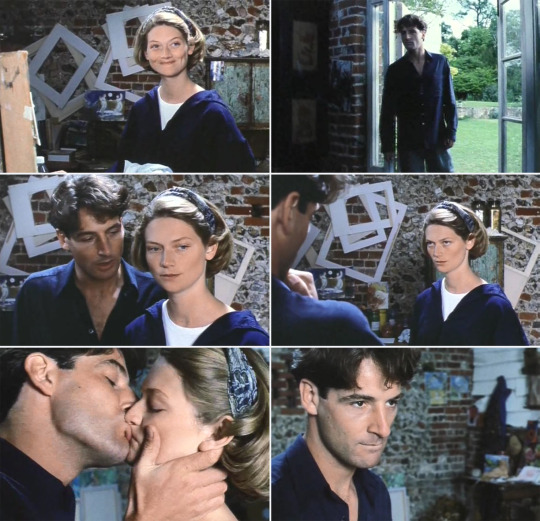

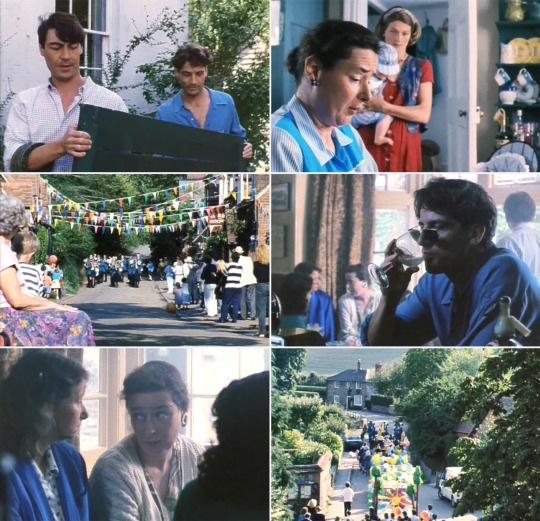
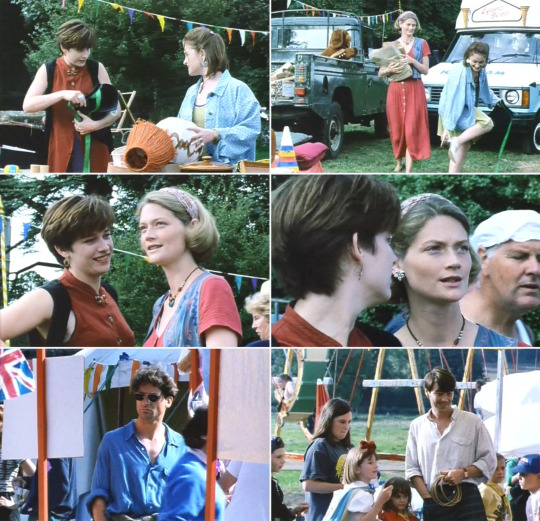


A Village Affair is a 1995 British television film based on the 1989 eponymous novel by Joanna Trollope.
Part III
#A Village Affair 1995#A Village Affair movie#country living#country life#country aesthetic#summer aesthetic#english countryside#english country house#english country style#book adaptation#lgbt movies#Sophie Ward#Kerry Fox#Nathaniel Parker#Jeremy Northam#Linda Bassett#romantic drama
19 notes
·
View notes
Text
Themes in Jane Austen’s Writing

Though many of her works are centered in the rigid social scene of the 19th century, Jane Austen’s books continue to entertain, inspire, and challenge fans, filmmakers, and writers.
Characteristics of Jane Austen’s Writing
Jane Austen’s novels have a number of distinctive features that make her work stand out from other literature of the time. Some recognizable characteristics and themes of Austen’s works include:
Colloquial language: Austen’s dialogue is written in the colloquial speech style of the time, capturing the realism of the way that people communicated when navigating the nuances of society.
Satire: In books like Emma and Pride and Prejudice, Jane parodies the social culture of her time, offering a sometimes scathing commentary on the obligation of marriage.
Romantic comedy: Most of Jane’s writing is a blend of romance and comedy, with many of her stories—like Mansfield Park and Emma—ending in engagements or an assumption that the romantic leads get married and live happily ever after.
Examination of class: From Mansfield Park, to Sense and Sensibility, to Northanger Abbey, many of Jane’s stories begin with young, middle class or working-class women being sent to live with wealthy relatives or neighbors, opening up a whole new social and romantic world to these young heroines.
Morality: Jane’s characters—like the irreverent Elizabeth Bennet of Pride and Prejudice—struggle with acting in accordance with their social duty and following their hearts, reflecting a battle between the individual and the rest of society.
Gender: Many of Jane’s narratives center around gender constructs. Her novels focus specifically on what it means to be a woman living in a period of repression and rigid social expectations of “proper” female behavior.
Jane Austen’s Major Novels
From her short stories, to her selected “juvenilia” writings from her childhood, many of Jane Austen’s works are part of the Western literary canon. Her novels are often included in school syllabi from middle school into college because of their importance to literary history.
Sense and Sensibility (1811): This novel centers around the three Dashwood sisters—Elinor, Margaret, and Marianne—and their widowed mother, when their father dies and they’re displaced from their estate. The sisters are introduced to a new social circle of charming and intriguing people when they move away from their ancestral home. There are a number of screen adaptations of the story notably, the 1995 Ang Lee-directed adaptation starring Emma Thompson.
Pride and Prejudice (1813): Jane Austen’s 1813 romantic novel Pride and Prejudice (originally called “First Impressions”) follows Elizabeth Bennet, the second eldest of the five Bennet sisters, and the conflict following her and her sister’s quest to get married and produce a male heir to inherit her father’s estate. In 2013, nearly 100 literary adaptations and interpretations of this story had been published since the book was released, including the bestseller Bridget Jones’ Diary, which was adapted into a hit film starring René Zellweger and Colin Firth as Mark Darcy.
Mansfield Park (1814): Austen’s third published novel, this book focuses on Fanny Price, a young girl sent to live with her wealthy relatives. Growing up, her cousins mistreat her with the exception of her one cousin Edmund. As the novel continues, we see Fanny’s relationship with Edmund evolve. This story has been adapted numerous times, including a BBC limited series, and a 1999 film adaptation.
Emma (1815): Written after Jane moved to the village of Chawton, Emma is a comedy of manners depicting the lives and challenges of society women living in Georgian���Regency England, centering on Emma Woodhouse. Emma makes matches between her friends and acquaintances for amusement but finds that busying herself in other peoples’ affairs is a frivolous distraction from the real growth she has to do. Two major film adaptations have been made of this story, including a 1996 version starring Gwyneth Paltrow. The 1995 film Clueless is a modernized version of this story.
Northanger Abbey (1817): This satirical novel follows a young clergyman’s daughter named Catherine Morland, who visits her wealthy neighbors to participate in a season of balls. This novel was published after Jane’s death in 1817. It has also been made into a number of TV and film adaptations, including a 1987 BBC miniseries.
Persuasion (1818): Persuasion was Austen’s last novel, published after her death in 1817. It follows the character Anne Elliot and her relationship with a navy captain which ends, then picks back up again after many years. The story was turned into a BBC miniseries in 1960, and a made-for-TV movie in 1995.
Jane Austen was a writer who wrote a series of popular novels, short stories, and poems in late 18th and early 19th century English literature.
She is best known for her romantic plots following bold and headstrong young female protagonists.
Austen’s novels often center around people in the middle or upper classes of British society, making sharp commentary about gender and the societal mores of the time.
Her literary work—including Emma and Pride and Prejudice—has served as the source material for numerous Hollywood films, literary modernizations, theater adaptations, and television miniseries over the years.
A Brief Biography of Jane Austen
Born in 1775 in Steventon, Hampshire, Jane was the seventh of eight children.
Jane was already writing during her childhood, and all of Jane’s works that were published during her lifetime were written under her pen name, “A Lady.”
She was considered a successful author during her lifetime, and the money she earned with her writing allowed her to be independent.
Though Jane’s books often centered around romantic stories, she never pursued marriage with any interested suitors.
Jane Austen died of unknown causes (speculated to likely be either Hodgkin’s lymphoma or Addison’s disease) in 1817 at the age of 41.
Source ⚜ More: Writing Notes & References ⚜ Writing Resources PDFs
#jane austen#literature#theme#writeblr#writers on tumblr#books#writing reference#dark academia#spilled ink#writing prompt#creative writing#booklr#writing inspiration#writing analysis#bookblr#writing ideas#writing resources
63 notes
·
View notes
Text
Ever since I was mildly horrified that Colin Firth is a fancast for Lisa Kleypas's Lord Westcliff (by Lisa herself which.... come on, you need to pick someone who is not hot and yet inexplicably super attractive because of his "vitality" or whatever, Lisa), I've come to realize people actually liken Westcliff to Mr. Darcy, and even call It Happened One Autumn a 'spicy" version of Pride and Prejudice which.... well, we won't get into that particular suggestion, buuuuut I do think likening Darcy to Westcliff is kind of a disservice to both characters (and calling it "spicy" Pride and Prejudice is a disservice to both texts).
For all that Westcliff is shown as this perfect paragon of aristocratic virtue, he's honestly.... kind of not. Apart from him and Darcy sharing a sense of duty and a degree of aristocratic snobbery (which, tbh, most aristocrats or gentlemen would have at the time), they really aren't all that similar personality-wise
Do I think the narrative about Darcy being a brooding borderline douchebag was pushed by by fans post-1995 Pride and Prejudice? Maybe. To a degree. But let's be real here, Westcliff comes way closer to being a dbag than Darcy ever does, particularly his hot-and-cold behavior with Lillian (the time he calls her an easy target for St. Vincent and then immediately pounces on her and fingers her in his butterfly garden comes to mind). Darcy's behavior towards Lizzy is fairly consistent; it's just, they both misinterpret one another's actions until the proposal makes everything clear. That's not to say they don't change their attitudes afterwards, but there was always civility at the least.
And I don't think Darcy is a super broody type, but he is definitely shy around people he doesn't know (awkward too), and seems like the type to socialize with a few close friends (like I'm convinced his only confidantes are Bingley, and then his own cousin Col. Fitzwilliam). Westcliff on the other hand displays no qualms about socializing in large groups, in fact, he seems to command a lot of attention in large group settings like balls and the big house parties he hosts (routinely, based on Secrets of a Summer Night, where he's described as an accomplished host).
I know it's hard to compare a text with on-page sex to a text that is much older and has no point of comparison, but there was this detail in Secrets of a Summer Night that stood out to me:

This is veering into headcanon territory but the more generous headcanon I have regarding Darcy's premarital sex life is largely "widows" and "older women" and that too... I imagine it's a limited number (otherwise, he's a virgin. or partially a virgin; that's my favorite). What I'd never think Darcy would do is "join in" with any village wenches in Lambton (a combination of his shyness and upper-class snobbery about socializing with the lower classes for fun). Nor do I think he'd he exhibitionist enough to do things with paramours at parties where friends could see him. Interestingly, in IHOA, Livia comments that Westcliff has had a few discreet affairs and nothing more, but between a secluded sister and a friend who routinely goes around town with him, I believe Simon Hunt lol; that being said Westcliff is deffo more of a society affair type than a sex worker/courtesan mistress type. To be clear, this isn't me judging Westcliff for having sex with a lot of women, it's just, again, for all that he outwardly behaves in a proper fashion, he really isn't, and has relatively relaxed views on propriety, even as he judges Lillian for her lack of it at first.
In his second proposal to Elizabeth, Darcy basically said he understands that "no means no", while Westcliff..... does not quite understand that.
Ways Westcliff is similar to Darcy:
They both are brought to their knees by women who initially don't fit within their notion of a "right" spouse. But that's such a broad trope, as is the fact that they both "save" their heroines in some sense.
There's a decent amount of language in P&P describing Darcy as a a fair-minded master and "liberal"; while I don't know enough to speculate on his actual politics (though I have read some pieces that suggest he might be, based on, among other things, the real-life figure Jane Austen may have named him after, the Earl Fitzwilliam), what we do know is that he's liberal in the sense of being a very involved master at his estate, liberal with money where his estate and tenants are involved. Basically, he's not stodgy and backwards, just like Westcliff is when it comes to his estate and tenants. Kleypas takes Westcliff's liberal attitudes a step further by aligning him with progressive causes and progressive politicians.

Look, both Westcliff and Darcy are classist to a degree; both initially balk at marrying women with connections to trade, but ultimately, they a) go ahead with marrying them anyway and b) we know they like to associate with people in trade in other ways. For example, Darcy and Bingley are good friends in the way that Westcliff and Simon Hunt are friends. Plus, we know Darcy gets on really well with Elizabeth's Aunt and Uncle Gardner (who are in trade), to the point that they're frequent visitors at Pemberley after their marriage. Basically, their snobbery is not universal.
Westcliff and Darcy are good to their siblings but even here, the actual sibling relationships are different. Westcliff is closer in age to both his sisters so their relationship is (mostly) noninterfering (tbh Westcliff exercises remarkable forbearance when McKenna returns) and Westcliff is less high-handed than I imagine Darcy is with Georgiana who, based on their age gap, likely regards him as a second father of sorts.
43 notes
·
View notes
Text
High-Profile Murder Cases of India: What We Know So Far
In India, there have been lots of crime cases that have made headlines in the news and it have also triggered debate across the country. These cases aren’t all about crimes but they’re more about justice, fairness, and the way they are affecting society. From horrific murders to enormous corporate frauds, these events have turned into tragedies that affected and stayed in our country forever. Focusing on what happened behind the curtains, on the judgments, and the consequences that occurred as a result. Hence, now we are on the way through the roller coaster of these thrilling events, that became the focus of the nation’s attention.
https://blog.ipleaders.in/
1. Transsexual burns childhood friend alive in Tamil Nadu
Transsexual burns childhood friend alive in Tamil Nadu On Christmas day, last year, 27-year-old Vetrimaran (born as Pandi Maheswari), burned his childhood friend, R Nandhini alive, suspecting that Nandhini was not romantically interested in him. The incident took place in Chennai's Thazhambur, on Nandhini's birthday eve. Vetrimaran, who underwent a sex reassignment surgery to marry Nandhini, took her out on the pretext of a birthday surprise. Vetrimaran then blindfolded Nandhini, tied her with a chain and slashed her wrist using a blade before setting her ablaze. Locals heard her screams and rushed her to the hospital where she succumbed to her injuries. Vetrimaran confessed to the crime during police interrogation.
https://indianexpress.com/
2. Shraddha Walkar murder case
Shraddha Walkar (27) was murdered by her live-in boyfriend Aaftab Poonawala on May 18, 2022, in Delhi. Aaftab strangled Shraddha over an arguement and dismembered her body into 35 pieces using different kinds of weapons, which he disposed off individually in the Chhatarpur forest. He stored her body parts in a 300-litre fridge. Poonawala was held on November 12 by Delhi police and confessed to the killing during interrogation. The case came to light after about six months, when Shraddha's father filed a missing person's complaint. He demanded capital punishment for Aaftab and a thorough probe against the Poonawala family.
https://www.hindustantimes.com/
3. Hyderabad doctor raped, set ablaze
A 26-yr-old veterinary doctor in Telangana was sexually assaulted, smothered and set ablaze. According to police reports, the victim after parking her two-wheeler, hired a taxi and went to a dermatologist's office. The four accused noticed her while parking and deflated her vehicle's tire in her absence. Upon returning the victim was offered help by the accused who then ambushed her. Three of the accused pushed her into the nearby bushes, poured whiskey into her mouth to put an end to her screams for help, and sexually assaulted her until the victim bled and lost consciousness. When she regained consciousness, she was smothered and her corpse was carried for 27 km. The victim's body was wrapped up in a blanket and set ablaze at 2.30 am on the Hyderabad Outer Ring Road under a bridge using furl. The four accused were killed in a police encounter, at 3.30 am on December 6, 2019.
https://www.indiatoday.in/
4. Nithari serial killings case
The Nithari killings case came to light after the disappearance of several children from Nithari village in Noida and when 8 skeletal remains of kids were found from the drain of Moninder Singh Pandher's house on December 29. Investigations pointed to Moninder and his domestic help Surinder Koli who were arrested. After 60 days of police custody, Koli confessed to luring and murdering the victims. The confession included necrophilia, cannibalism and dismembering of the corpses. The duo was convicted of rape and murder but were acquitted due to lack of evidences.
https://timesofindia.indiatimes.com/
5. Tandoor murder case
Naina Sahni, wife of Sushil Sharma, was shot by her husband over suspicion of an extramarital affair on July 2, 1995. Her body was chopped into pieces and stuffed into a tandoor which was managed by Sharma's friend. Smoke from the tandoor attracted police who were patrolling in the area. Sharma was arrested after Naina's half-burnt body parts were found. He was awarded the death sentence, but the Supreme Court commuted it to life imprisonment. Sharma was released from prison after 23 years.
https://theprint.in/
6. Sheena bora murder case
Sheena Bora (24) was allegedly strangled in a car by Indrani Mukherjee, her then-driver Shyamvar Rai, and her former husband Sanjeev Khanna in April 2012. Sheena's body was later found burnt in a forest in Raigad district. Financial disputes as well as Indrani's opposition to Sheena's relationship was the motive for the killing. The crime came to light 3 years later when Shyamvar was arrested in another case and turned approver in the Sheena Bora murder case which led to Indrani's arrest. The CBI convicted Indrani but the Supreme Court granted her bail citing that she had already been in custody for six-and-a-half years.
https://www.thehindu.com/
7. Sanjay & Geeta Chopra murder case
Siblings Geeta Chopra (16) and Sanjay Chopra (14) were kidnapped and murdered in 1978 in New Delhi while they were on their way to the All India Radio (AIR) office to participate in a programme called 'Yuvavani'. Kuljeet Singh (alias Ranga Khus) and Jasbir Singh (alias Billa) were convicted for the crime. They abducted the siblings for ransom, on the pretext of giving them a ride to their destination, but later killed them upon knowing that their father was a naval officer. They first killed Sanjay, then raped and killed Geeta. Ranga and Billa were sentenced to death and were executed on January 31, 1982. The body of the siblings were found in advanced stage of decomposition and so the evidence of sexual assault could not be gathered. However, forensic evidence such as hair, fingerprints, and bloodstains were found. The siblings were awarded the Kirti Chakra on April 5, 1981, and two bravery awards 'Sanjay Chopra Award' and 'Geeta Chopra Award' were instituted in their honour.
https://www.ndtv.com/
8. Delhi biryani murder case
A video of a 16-year-old boy stabbing another boy in Delhi's Welcome colony went viral on social media. The allegedly drunk 16-yr-old stabbed the victim 55 times with a knife. According to the Delhi police the victim was attacked over money for biryani. The perpetrator had asked money from the teen who refused. The accused strangled the victim and killed him by stabbing him in the face, neck and below the eyes. CCTV footage showed that the perpetrator, in an inebriated state, dancing around the dead body. He was arrested immediately by the Delhi police.
https://indianexpress.com/
Conclusion
Criminal cases not only reveal the darker side of society but also shed light on the complexities of human behavior, justice, and law enforcement. As these stories unfold, they remind us of the ongoing fight for truth and accountability. Each case is a stark reminder of the importance of vigilance, social responsibility, and the role of the legal system in ensuring justice. By staying informed and engaged, we contribute to a society where crime is confronted, and justice prevails.
Sources:
www.hindustantimes.com
www.britannica.com
5 notes
·
View notes
Note
Happy WBW! What's the in story lore behind the main setting? Why did people build a city/town/village/etc there in the first place? Why do people continue to live there? Are tourists common and if yes, what brings them there?
-HD
Happy Worldbuilding Wednesday (sleepless Jeb says on Thursday), and thank you for the ask, Hyper Discourse!
Honestly, White Sky has a stupidly high lore-and-backstory-to-actual-plot ratio: there's pages upon pages of stuff that'll never exist as more than the odd reference or infodump. There's a lot we could go into - the depths of White Sky's alternate world history, the evolution of spacecraft and human habitation in space, the plans for colonization of the outer planets... for now though, we'll focus on the Moon, as it's a major location in the plot and forms much of the setting.
The Moon, or Luna as it's commonly known politics-wise, was first landed on by humans on July 20th, 1969, when the American lunar mission Apollo 11 touched down on the lunar surface. Commander James A. Lovell Jr. left the Lunar Module the following day, and became the first human to set foot on another world. Not wanting to be outdone, the USSR landed General Alexei Leonov on the Moon in February of the following year aboard Soyuz-9L. Thus began the world powers' feverish race to the Moon, a race which saw its fair share of fatalities and casualties. Nevertheless, by 1980, both countries had their first lunar outposts on the Moon - the Soviets had Zvezda, and the US had Moonlab. Gradually, these meagre outposts morphed into fully equipped and inhabited bases: by 1995, at least twelve people permanently occupied the lunar surface at any given time. After the Thermospheric Wars ended in 2002 with the collapse of the Soviet Union, the Earth-Luna Treaty Organisation (ELTO) was established to oversee and regulate access to space. This coincided with the rise of other governments and nations as emerging space powers, such as the European Union (ESA), Japan (JAXA) and China (CNSA). Gradually, the Moon's population grew as nations staked their claims to lunar territory. The first precursors to the present-day domed cities were basic cities developed in the late-2010s and early-2020s: distinct from the myriad research complex, these habitats were designed purely for human habitation and tourism. Supported by the forebears of modern mega-corporations, Earth's ultra-wealthy began to invest, travel and build. During times of turmoil on Earth in the mid-21st century, Luna was a growing refuge; a home away from home for thousands of tourists, researchers and workers. Earth's reliance on lunar helium-3 after the oil wars only accelerated this process, and the end result is what we see in the current setting of White Sky: pinpricks of light and warmth covering our satellite in Earth's night sky.
Luna is, of course, heavily regulated. Several cities with a combined population of almost 150,000 would be trivial on Earth. On a world 240,000 miles away and naturally inhospitable to mankind, it's an absolute necessity. A tentative lunar democracy has formed between the lunar city-states, presided over by ELTO, who hold supreme overriding power over all lunar affairs. However, Luna is not without flaws. Tourism is a major draw to the lunar cities, whether it's a billionaire visiting their 'holiday apartment' or a middle-class family's once-in-a-lifetime lunar trip. Critics point to the increasing wealth disparity between Luna's uber-rich, consumerism-centered tourism industry and the struggles the thousands of workers and permanent residents propping it up - some say this is the number one factor in the cities' consistently high crime and corruption rates, while others point to ELTO's increasingly draconian restrictions and defensive measures as the impetus for the Moon's growing underground terrorist network. Whatever the case, it's clear that the Moon is a flashpoint for the future of humanity: will it gain independence from Earth and become the first foothold to an interplanetary civilization? Or will intergovernmental and corporate meddling sink humanity's aspirations while they're still in their infancy?
#writeblr#writers community#worldbuilding wednesday#wbw#wbw answers#wip: white sky#scifi#silverslipstream
5 notes
·
View notes
Text
Y'know, you should be watching Hollyoaks. - Why is Hollyoaks overhated?
Why is Hollyoaks overhated? The question lingers in the air like an unsolved mystery, as viewers across the globe overlook the hidden gem of the soap-opera world. With its vibrant characters, relentless plot twists, and unabashed commitment to delivering entertainment at warp speed, Hollyoaks has carved its own rebellious path amidst the sea of soaps. Yet, it remains unjustly overshadowed by its bigger, more established counterparts. In this article, we embark on a journey to uncover the truth behind Hollyoaks' perpetual underdog status, and why, against all odds, it just might be the best damn soap-opera out there. Buckle up, skeptics, as we delve into a world where melodrama reigns supreme and where Hollyoaks shines as a beacon of unapologetic brilliance.

Oh, Hollyoaks, the pint-sized powerhouse of the soap opera world. Born in 1995, it emerged as the fresh-faced rebel of the soap world, determined to shake up the status quo. Set in the fictional village of Chester, Hollyoaks captivated audiences with its youthful energy and boundary-pushing storylines. Over the years, it has fearlessly tackled hard-hitting issues, fearlessly delving into the darkness of teenage struggles, mental health, and societal taboos. Nowadays, however, prepare to be dazzled and left gasping for breath as you enter the whirlwind of drama, intrigue, and hair-raising plot twists that is Hollyoaks. This isn't your grandmother's slow-burning, snail-paced soap opera, don't you remember EastEnders last Christmas day? No, this is a turbocharged thrill ride that leaves you wondering if the writers have secretly taken up residence in your brain.
Unlike its contemporaries, Hollyoaks operates on a different frequency altogether. It's as if someone turned up the dial to maximum intensity and injected every episode with a potent dose of adrenaline. Gone are the days of dragging storylines that take months to unfold. Instead, Hollyoaks sweeps you off your feet, tossing you headfirst into a maelstrom of jaw-dropping events. Most storylines lasting the full week, with intense and ACTUAL gangster characters.
... but... If you don't like the drama and intense fights and hardcore, psycho storylines with villains, there's plenty of relaxing, light-hearted and overall happy moments. Ste's wedding with James made me cry. Hell, alot of the times I cried. I really lost myself in the world of this show. It's amazing.

What makes Hollyoaks truly stand out from the crowd is its knack for condensing an incredible amount of drama into each episode. It's like they've taken a full-length soap opera and distilled it down to its most potent essence. This means you get a concentrated burst of explosive storylines, simmering tensions, and electrifying confrontations, all neatly packaged and served up within a mere 22 minutes. It's like soap opera adrenaline on steroids. Dose me up!
And boy, does Hollyoaks know how to keep you on the edge of your seat. Blink, and you might miss a crucial revelation, a shocking affair, or Hollyoaks bad boy Warren Fox suddenly kidnapping a police-officer to threaten another man. The breakneck pace leaves no room for dull and boring filler or tedious scenes. It's like the writers have made a pact with the devil to ensure that every second is packed with enough excitement to make your heart palpitate and your jaw hit the floor.


Warren Fox waving, Hollyoaks resident - Professional Gangster - Established and Matthew-verified DILF
But it's not just the breakneck speed that sets Hollyoaks apart; it's the sheer entertainment value. This is a soap opera that knows how to have fun. Sure, there's plenty of angst, heartbreak, and dark secrets lurking in the shadows, but it's all tempered with a healthy dose of wit and irreverence. Hollyoaks doesn't take itself too seriously, and that's precisely why it's so darn enjoyable. It's like a rollercoaster ride with unexpected twists and turns, where you can't help but throw your hands in the air and let out a gleeful scream. So, if you're tired of soaps that move at the pace of a snail on tranquilizers, buckle up and dive headfirst into the electrifying world of Hollyoaks. Be prepared for a condensed, breakneck journey that will leave you breathless and craving more. In the realm of soap operas, Hollyoaks reigns supreme, injecting a shot of pure adrenaline and entertainment directly into your veins. Brace yourself for the most turbocharged, exhilarating 30 minutes of your TV-watching life. I heavily suggest you watch Hollyoaks. It took me a week to pick up the characters. It's easy. You will thank me later.
4 notes
·
View notes
Text
SEVENTEEN
Even Naples in imagination cannot efface the quiet fertile comeliness of Penkill in reality, and when, beyond the immediate greenness, a gorgeous sunset glorifies the sea distance, one scarcely need desire aught more exquisite in this world.
CHRISTINA ROSSETTI, Letter to Anne Gilchrist (1870)
ONE OF THE ‘Ayrshire Alps’, Dersalloch Hill, is crowned by 23 wind turbines which dominate the horizon, and the ecotycoons want more, and bigger. Nearby, in irony, sits the 18th-century conservation village of Straiton, the realm of the Save Straiton for Scotland pressure group formed in 2013 to object to their being insidiously surrounded by giant turbines 50 metres higher than Blackpool Tower.

Despite the turbines, Straiton advertises itself as walking country, The village signpost even sports the slogan ‘Rambler Territory’. Like turbines or loathe them, it is worth a ramble to Lambdoughty glen and its chain of gurgling waterfalls up in the foothills. One of them, Tairlaw Linn, even features in the annals of English literature. It is here, during a day out with his friend, William Bell Scott, in the summer of 1869, that the troubled painter and poet, Dante Gabriel Rossetti, contemplated suicide. Rossetti’s wife had died of an overdose of laudanum, and he had become an alcoholic. He was prone to thought disorder and addicted to whisky and chloral hydrate (‘knockout drops’, an ingredient made famous by one Mickey Finn, a crooked saloon owner in Chicago, who drugged customers with it, and then robbed them.).
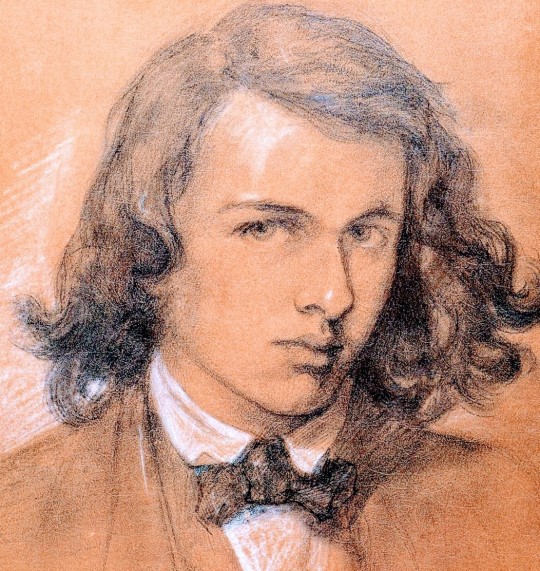
William Bell Scott recorded in his Autobiographical Notes (1830 to 1882): ‘Never shall I forget the expression of Gabriel’s face when he bent over the precipice, peering into the unfathomed water dark as ink, in which sundry waifs flew round and round like lost souls in hell.’
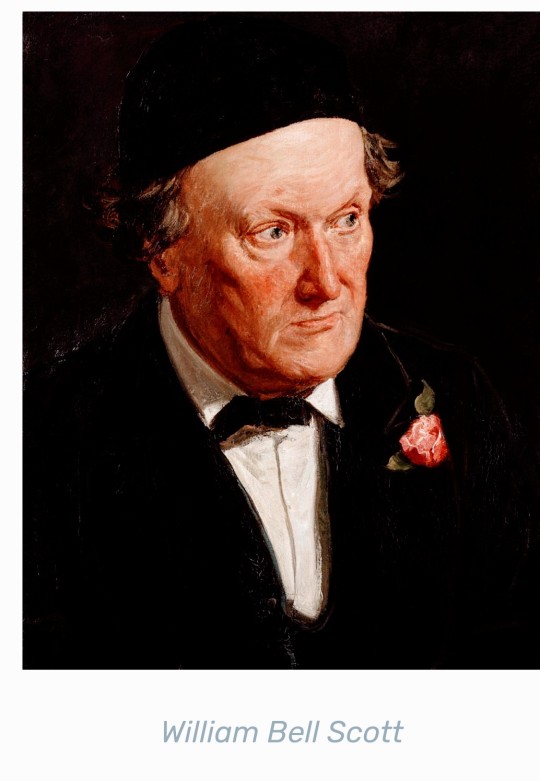
Rossetti had told Scott: ‘One step forward, and I am free!’ He decided not to throw himself down the burn, however, although he would try to kill himself three years later, in England. He saw people staring at him from hollowed-out walls. He heard voices and was a hypochondriac. One doctor diagnosed ‘effusion of serum on the brain’ and said he was beyond all hope. If he recovered, he would have brain damage.
Penkill Castle, ensconced in cutely wooded Penwhapple Glen, was a summer haunt for such as Scott, Rossetti, his sister Christina, and William Morris, with whose wife Jane, Rossetti was conducting an affair. Rossetti wrote the poem The Stream’s Secret at Penwhapple Burn near the castle, which was a shrine for the Pre-Raphaelite movement. During a visit to Penkill, half a mile from Dailly, Rossetti wrote sonnets in a cave named after a covenanting fugitive. Wrote Scott: ‘Here I used to find him face to the wall lying in a shallow cave that went by the name of a seventeenth-century Covenanter, Bennan’s Cave, working out with much elaboration and little inspiration.’
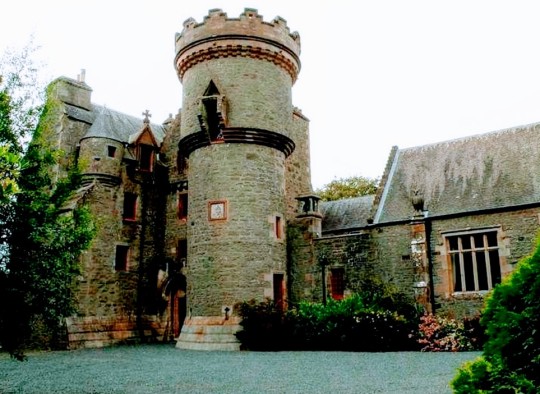
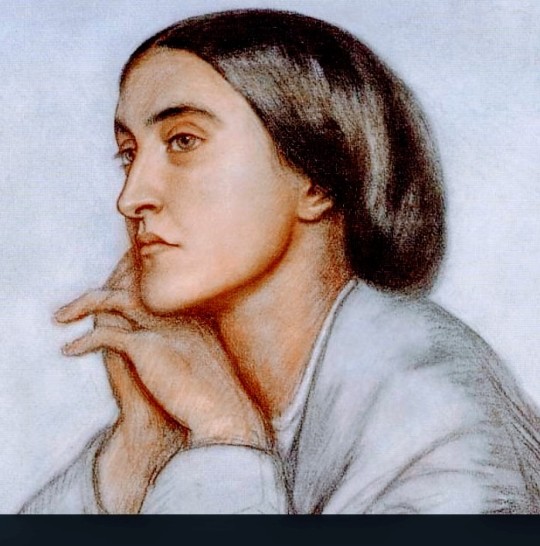
Rossetti tried to get Jane Morris to spend what has become known as a dirty weekend with him (his friend William, who was so close to him that Rossetti named his pet wombat after him, wasn’t invited along).
I looked for the cave along Penwhapple glen, but it seems it vanished long ago as a result of some landslide. Penkill is still there, however. Campaigners fought to ‘buy it for the nation’ in 1995 but its American owner, Elton Eckstrand, a wealthy drag racing driver and lawyer, sold it to Scots-Canadian businessman Don Brown, who then sold it to a Chile-born film producer Patrick Dromgoole.
The previous owner, Evelyn May Courtney-Boyd, a descendant of Scott’s mistress, had become involved financially with the local milkman, Willie Hume, who reputedly told her that he and his wife would feed her if they moved into the lodge. He then asked to buy it. Later they moved into the 25-bedroom castle. Paintings from the collection began to appear in Scotland’s salerooms, including The Night-Hag, which now lives in New York’s Metropolitan Museum of Art. One of them, painted by Scott, remained fastened above the mantelpiece with an inscription, ‘Move not this picture. Let it be. For love of those in effigy’.
Apparently, Hume tried to prise the painting from the wall with a poker, but he choked, and then died of angina. His wife suddenly left the castle and bought a pub, which failed. She then became a cleaner in a hospital. For the record, Penkill Castle appeared on Channel 4’s Come Dine with Me in 2011. I’ve no idea what happened to the milkman’s spouse.
#dante gabriel rossetti#christina rossetti#penkill castle#william morris#ayrshire#wind turbines#straiton
0 notes
Text


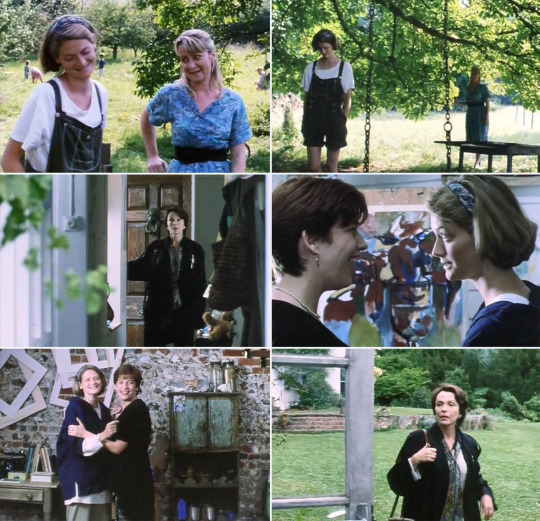


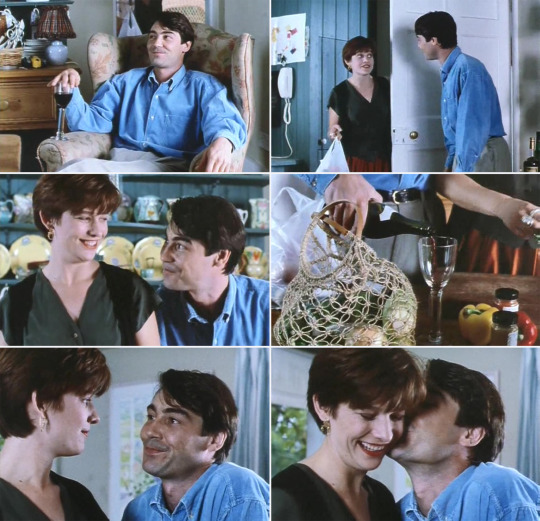






A Village Affair is a 1995 British television film based on the 1989 eponymous novel by Joanna Trollope.
Part II
#A Village Affair 1995#A Village Affair movie#country living#country life#country aesthetic#english countryside#english country house#lgbt movies#summer aesthetic#love affair#book adaptation#Joanna Trollope#Sophie Ward#Kerry Fox#Nathaniel Parker#Jeremy Northam#William Scott-Masson
7 notes
·
View notes
Text
Radius
History of The Milkmarket
As part of the radius project I wanted to take a deeper look at the history of the milkmarket in Limerick so as to better understand the space itself and get more inspiration when it comes to Erving into the radius of time itself.
Background
As a country Ireland has always been heavily agricultural, as a rural island country this is how it sustained itself and still sustains itself in some ways. Because of this agricultural aspect of life markets were very common and popped up around villages towns and cities to sell produce. In the 1840s the Limerick Market Trustees was set by an Act of Parliament to manage affairs of markers within the city. The trustees acquired a large area of land in Garryowen where many of the markets were relocated (for example, the butter market, the pig market and the hay market). The corn market (milkmarket) was retained however.
Due to advancements in industry and transports many markets shut down however the milkmarket continued to thrive as it adapted and changed as it needed to. Following the release of the Trustees from receiverships a renovation of the milkmarket was carried out and it was reopened in 1995.
Women in Agriculture
Women have been an essential part of Irelands farming background. A woman born in 1911 could expect to live until her mid 50s and in a farming woman’s lifetime she could be expected to have eight or nine children but one in five would die in childbirth. Women’s work was essential to the farm economy and most farming women spent their time in or nearby the house, busy with eggs and poultry, milking and domestic duties for example.
Selling eggs gave many women their only independent source of income. Women would visit the markets to sell and purchase produce for the benefit of the farm, this may have been one of the only places women could gain and independent income and one of the places where they could socialise within the community.
Looking into the history of the milkmarket has inspired me to look at certain imagery I relate to rural life, poultry, women, architecture etc.



1 note
·
View note
Text
Braveheart of the Day: Honoring Our Heroes 🇮🇳

On 24 September 1995 at 1635 hours, while the cordon was being established around the dispensary in village Chakhu, District Baramulla in J&K, the terrorists threw grenades and opened heavy automatic fire. Gunner Prem Kumar Singh of 29 Rashtriya Rifles, despite being almost paralyzed below the abdomen, crawled to a firing position and retaliated with accurate automatic fire from his Light Machine Gun. Although losing consciousness, he kept engaging the terrorists. As a result of his action, the terrorists were pinned down, and an effective cordon of the dispensary was established. This led to the killing of ten terrorists and the recovery of nine AK rifles in a single operation. Gunner Prem Kumar Singh displayed unmatched valour and made the supreme sacrifice in the highest traditions of the Indian Army.
🚀 Stay updated on current affairs, motivation, and important notes for free. Join our telegram: ➡️ https://t.me/breakthroughpoint_001
#gunnerpremkumarsingh#rashtriyarifles#indianarmyheroes#shauryachakra#gorkharifles#indiansoldier#indiansoldiers#jaihind#defenceaspirants#bravery#sacrifice#baramullaoperation#terroristskilled#heroicaction#supremesacrifice#armyvalor#armybravery#indianarmy#lightmachinegun#valorinbattle#september1995#jammuandkashmir#posthumously
0 notes
Text
Events 7.5 (after 1945)
1945 – The United Kingdom holds its first general election in 10 years, which would be won by Clement Attlee's Labour Party. 1946 – Micheline Bernardini models the first modern bikini at a swimming pool in Paris. 1948 – National Health Service Acts create the national public health system in the United Kingdom. 1950 – Korean War: Task Force Smith: American and North Korean forces first clash, in the Battle of Osan. 1950 – The Knesset of Israel passes the Law of Return which grants all Jews the right to immigrate to the Land of Israel. 1954 – The BBC broadcasts its first daily television news bulletin. 1954 – Elvis Presley records his first single, "That's All Right", at Sun Records in Memphis, Tennessee. 1962 – The official independence of Algeria is proclaimed after an eight-year-long war with France. 1970 – Air Canada Flight 621 crashes in Brampton, Ontario, Canada, killing all 109 people on board. 1971 – The Twenty-sixth Amendment to the United States Constitution, lowering the voting age from 21 to 18 years, is formally certified by President Richard Nixon. 1973 – A boiling liquid expanding vapor explosion (BLEVE) in Kingman, Arizona, following a fire that broke out as propane was being transferred from a railroad car to a storage tank, kills eleven firefighters. 1973 – Juvénal Habyarimana seizes power over Rwanda in a coup d'état. 1975 – Arthur Ashe becomes the first black man to win the Wimbledon singles title. 1975 – Cape Verde gains its independence from Portugal. 1977 – The Pakistan Armed Forces under Muhammad Zia-ul-Haq seize power in Operation Fair Play and begin 11 years of martial law. Zulfikar Ali Bhutto, the first elected Prime Minister of Pakistan, is overthrown. 1980 – Swedish tennis player Björn Borg wins his fifth Wimbledon final and becomes the first male tennis player to win the championships five times in a row (1976–1980). 1984 – The United States Supreme Court gives its United States v. Leon decision providing a good-faith exception from the Fourth Amendment exclusionary rule against use of evidence obtained through defective warrants in criminal trials. 1987 – Sri Lankan Civil War: The LTTE uses suicide attacks on the Sri Lankan Army for the first time. The Black Tigers are born and, in the following years, will continue to kill with the tactic. 1989 – Iran–Contra affair: Oliver North is sentenced by U.S. District Judge Gerhard A. Gesell to a three-year suspended prison term, two years probation, $150,000 in fines and 1,200 hours community service. His convictions are later overturned. 1994 – Jeff Bezos founds Amazon. 1995 – Armenia adopts its constitution, four years after its independence from the Soviet Union. 1996 – Dolly the sheep becomes the first mammal cloned from an adult cell. 1997 – Sri Lankan Civil War: Sri Lankan Tamil MP A. Thangathurai is shot dead at Sri Shanmuga Hindu Ladies College in Trincomalee. 1999 – U.S. President Bill Clinton imposes trade and economic sanctions against the Taliban regime in Afghanistan. 2003 – The World Health Organization announces that the 2002–2004 SARS outbreak has been contained. 2004 – The first direct Indonesian presidential election is held. 2006 – North Korea tests four short-range missiles, one medium-range missile and a long-range Taepodong-2. The long-range Taepodong-2 reportedly fails in mid-air over the Sea of Japan. 2009 – A series of violent riots break out in Ürümqi, the capital city of the Xinjiang Uyghur Autonomous Region in China. 2009 – The largest hoard of Anglo-Saxon gold ever discovered in Britain, consisting of more than 1,500 items, is found near the village of Hammerwich, near Lichfield, Staffordshire. 2012 – The Shard in London is inaugurated as the tallest building in Europe, with a height of 310 metres (1,020 ft). 2016 – The Juno space probe arrives at Jupiter and begins a 20-month survey of the planet. 2022 – British government ministers Sajid Javid and Rishi Sunak resign from the second Johnson ministry, beginning the July 2022 United Kingdom government crisis.
0 notes
Text
Yank Barry to Be Honored with the Muhammad Ali Humanitarian Award in Las Vegas
Yank Barry was honored with the Muhammad Ali Humanitarian Award by the Nevada Boxing Hall of Fame on July 24, 2015, in Las Vegas, NV. The prestigious award was presented during the Nevada Boxing Hall of Fame (NVBHOF) Induction Ceremony and Gala, held on Saturday, August 8, 2015, at 6:00 p.m. at the Palace Ballroom at Caesars Palace.
The event celebrated an epic 2015 Class of Inductees, including boxing legends such as Muhammad Ali, Lennox Lewis, Marvelous Marvin Hagler, Marco Antonio Barrera, and Felix Trinidad. Yank Barry, the philanthropist and Founder of Global Village Champions Foundation, was recognized for his exceptional humanitarian efforts and his 25-year philanthropic partnership with the Greatest, Muhammad Ali.
The private affair on August 7, 2015, at The LINQ, and the Induction Ceremony and Gala on August 8, 2015, at Caesars Palace, provided a platform to acknowledge Barry's significant contributions. He received the Muhammad Ali Humanitarian Award in recognition of his ongoing mission to save lives, highlighted by his dedication to feeding over 1 billion people worldwide.
Global Village Champions Foundation, established in 1995, had become a leader in private humanitarian delivery of nutrition to those in need across the globe. The charity, with the support of donors and notable figures like Muhammad Ali, Gary US Bonds, and Evander Holyfield, successfully provided essential food to the hungry worldwide. Barry's commitment extended to humanitarian efforts, including the rescue of refugees who fled to Bulgaria to escape the ongoing Syrian war crisis.
The NVBHOF also featured a Boxing Legends Memorabilia Exhibit on display on Friday and Saturday, with a special attraction featuring world-renowned artist NICOLOSI unveiling a magnificent piece for auction to benefit charitable causes.
In conclusion, Yank Barry's recognition with the Muhammad Ali Humanitarian Award marked a momentous occasion, celebrating his human rights heroism and valiant efforts to alleviate hunger and save lives worldwide.
0 notes
Text
UC mass wedding of 1,000 couples probed for recruiting prostitutes, nannies
Philippine Daily Inquirer MANILA by Bobby Timonera 1996
Wedding bells set off the alarm. Did the grooms offer to have and to hold their brides or did they offer them jobs? This is what the Bureau of Immigration is trying to find out after the “mass wedding” held last January 23 between mostly South Korean men and nearly 1,000 Filipino women. The exchange of “I dos,” the bureau suspects, may be an operation to illegally recruit domestic helpers and prostitutes. Immigration Commissioner Leandro I. Verceles Sr. said his office will observe with “extreme caution” in approving the departure of the Filipino brides. He also ordered investigations into the suspicious weddings. “This could be a case of mail-order-bride-in-reverse operation which is illegal under our laws,” the commissioner said. The mass wedding of 984 couples at the Philippine International Convention Center was supposed to be only a religious rite and thus has no legal effect, Verceles pointed out.
Moonies It was under the auspices of the Seoul-based Holy Spirit Association for the Unification of World Christianity whose members are also known as the “Moonies.” They are named after the controversial Rev. Sun Myung Moon of South Korea, leader of the church. The Rev. Chung-hwan Kwak, representing Moon, blessed the couples, which included people from the United States, Taiwan, Thailand, Malaysia, Japan, but mostly South Korea. Verceles said the Koreans probably came over for the wedding ceremony when immigration agents at the Ninoy Aquino International Airport (NAIA) prevented 300 Filipino women from departing last month. They claimed to be members of the same church as the “Moonies”. Verceles dispatched immigration agents to the wedding site to gather the names of the couples. At the same time, he also alerted immigration personnel at the NAIA to prevent the brides from leaving while investigations are being conducted. Citing an intelligence report from the Department of Foreign Affairs, Verceles said that the “Moonies” had previously sponsored the recruitment of a large number of Filipino women to work in Korea. The same report said that late last year, 184 Filipinas were brought to Korea aboard a chartered plane. They were reportedly brought to a training center where they were housed for three days before being deployed as domestic helpers and prostitutes. The Unification church said it had no immediate comment.
Not first time It was the second mass wedding conducted in Manila by the said church. Last year, 1995, about 3,000 Filipinos were married in a basketball gym in Manila as part of a mass wedding performed by Moon via satellite from Seoul. They were among 360,000 couples married worldwide in that ceremony. “Originally, the blessing was available only to adherents of the Unification Church,” a statement from the group said. “Now, however, anyone wanting to (can) participate, regardless of religion, race or nationality.”
Prison term
… Moon, a South Korea native, served 13 months in a U.S. federal prison on charges of tax evasion [and document forgery] before being released in 1985. …
_________________________________
Moonies demanded $2,000 from Koreans who wanted to have Filipinas as “housemaids and sex partners.”
Philippine Daily Inquirer MANILA by Bobby Timonera 1995 Farmers’ daughters are Moonie targets The Moonies are combing the Philippine countryside in search of farmers’ daughters to lure into their trap. One such innocent, Carlita, who is in her 20s, was lucky to get away. Carlita, her face covered with a towel, occasionally lapsed into tears and silence as she told reporters of her ordeal. This is her story. Sometime in November, the sect’s recruiters arrived at Carlita’s village in Nueva Ecija and asked the women if they would be interested in marrying Koreans. Photographs of Korean men were passed around. “OK, we’ll see if we get to like them,” the women said. They were told to attend a seminar at the sect’s church in Cabanatuan City. It was supposedly about the “ideal family.” Later, they were asked to wear nice clothing, were made up, and photographed. Then they were told that should authorities ask them about their marriage plans, they should answer that they have been writing to and talking with the Korean men over the phone for some time. Of the four women recruited, only three were matched with Koreans. One was apparently dropped. One day the women were invited to go to the church’s office in Manila in the company of Korean men. Along the way, the Koreans embraced them. Suddenly afraid, Carlita and another woman alighted from the vehicle near the Nepa Q-Mart market along Edsa in Quezon City. Carlita being a daughter of one of the peasant leaders of the Demokratikong Kilusang Magbu-bukid ng Pilipinas (DKMP), the other woman rushed to the DKMP office to report the incident. But their friend who was left behind was brought to the Unification Church’s headquarters at 32 Samar Avenue in Quezon City. It was this woman who told peasant leader Jaime Tadeo of the DKMP that a Caucasian, whose nationality she did not know, asked the Koreans to pay him $2,000. It was not known if the amount was payment for the recruitment job. But it jibed with a report from the Philippine Embassy in Seoul that the Moonies usually demand $2,000 from Koreans who wanted to have “housemaids and sex partners.” The transaction appears to be part of the sect’s fund-raising campaign. Tadeo, along with Carlita, went to the Bureau of Immigration office in Intramuros to seek its help in closing the Holy Spirit Association for the Unification of World Christianity in Cabanatuan City.
“We believe they are just using their church as a front for illegal recruitment,” Tadeo said.
_________________________________ Korean UC leaders made lots of money from “selling” hundreds of pure, faithful, Filipino sisters
Morpheus: “I was on a staff that helped organize picture matchmaking in the late 1990s. Rev. Moon would come in and match all these young Filipino sisters to older Korean men who were not even members. I’m not sure Rev. Moon was aware of the wheeling and dealing that would go on behind the scenes. Many of these farmers and land owners would mortgage their farm to be admitted to these picture matchings. The Philippine Government complained. Discovered later that Korean leaders made lots of money this way.” (April 22, 2015)
0 notes
Text
Blog Tour + #Excerpt: KIN by Carole Boston Weatherford and Jeffery Boston Weatherford (w/ #giveaway)!

Welcome to Book-Keeping and my stop on the Rockstar Book Tours blog tour by Carole Boston Weatherford and Jeffery Boston Weatherford! I've got all the details on this new book of art and poetry, an excerpt, and a giveaway below.
About the Book

title: KIN: Rooted in Hope author: Carole Boston Weatherford art by: Jeffery Boston Weatherford publisher: Atheneum Books for Young Readers release date: 19 September 2023
A powerful portrait of a Black family tree shaped by enslavement and freedom, rendered in searing poems by acclaimed author Carole Boston Weatherford and stunning art by her son Jeffery Boston Weatherford. I call their names: Abram Alice Amey Arianna Antiqua I call their names: Isaac Jake James Jenny Jim Every last one, property of the Lloyds, the state’s preeminent enslavers. Every last one, with a mind of their own and a story that ain’t yet been told. Till now. Carole and Jeffery Boston Weatherford’s ancestors are among the founders of Maryland. Their family history there extends more than three hundred years, but as with the genealogical searches of many African Americans with roots in slavery, their family tree can only be traced back five generations before going dark. And so from scraps of history, Carole and Jeffery have conjured the voices of their kin, creating an often painful but ultimately empowering story of who their people were in a breathtaking book that is at once deeply personal yet all too universal. Carole’s poems capture voices ranging from her ancestors to Frederick Douglass to Harriet Tubman to the plantation house and land itself that connects them all, and Jeffery’s evocative illustrations help carry the story from the first mention of a forebear listed as property in a 1781 ledger to he and his mother’s homegoing trip to Africa in 2016. Shaped by loss, erasure, and ultimate reclamation, this is the story of not only Carole and Jeffery’s family, but of countless other Black families in America.
Add to Goodreads Purchase the Book
About the Author and Artist

Hailed as “a master” and “the dean” of nonfiction for young people,” Newbery Honor and Coretta Scott King Award winner Carole Boston Weatherford is a New York Times best-seller and two-time NAACP Image Award winner. Since her 1995 debut, she has authored 70-plus books including four Caldecott Honor winners: Unspeakable: The Tulsa Race Massacre; Freedom in Congo Square, Voice of Freedom: Fannie Lou Hamer: Spirit of the Civil Rights Movement, and Moses: When Harriet Tubman Led Her People to Freedom. Her books have won nine Coretta Scott King Awards or Honors. She writes the diverse books that she lacked as a child. A Baltimore native and the daughter of educators, Carole was virtually born with ink in her blood. At age six, she dictated her first poem to her mother. Her father, a high school printing teacher, published a few of her early poems on the press in his classroom. Meanwhile, her grandmothers passed down oral traditions and stories. By middle school, Carole had transferred from an all-black public school to a majority-white, private school where a teacher wrongfully accused her of plagiarism. That slight compelled her to chronicle a more inclusive history, to amplify marginalized voices and to build monuments with words. Now, children’s books are a family affair for Carole. In KIN: Rooted in Hope, she and her son, award-winning illustrator Jeffery Weatherford embark on a genealogical quest. Through multi-voiced poems and dramatic scratchboard illustrations, mother and son conjure the voices and visages of their forebears. Their ancestors lived through the American Revolution, fought in the Civil War, were enslaved alongside Frederick Douglass, cofounded Reconstruction-era villages, and according to local lore, descended from African royalty. A professor at Fayetteville State University, an HBCU in North Carolina, Carole has been recognized with the Nonfiction Award from the Children’s Book Guild, the North Carolina Literature Award, the Ragan-Rubin Award from North Carolina English Teachers Association and a place in the North Carolina Literary Hall of Fame. She is a life member of Delta Sigma Theta Sorority. Jeffery earned his M.F.A. from Howard University where he was a Romare Bearden scholar and studied under artists from the Black Arts Movement. A rapper and a fine artist, Jeffery has performed or exhibited in Washington, D.C., Atlanta, Baltimore, North Carolina, West Africa and the Middle East. Jeffery’s first book was You Can Fly the Tuskegee Airmen, and his first picture book was Call Me Miss Hamilton. Both appeared on best book of the year lists.
Connect with Carole and Jeffery: Website | Twitter | Carole Instagram | Jeffrey Instagram | Goodreads | Amazon | BookBub
Excerpt
Read the excerpt here.
About the Giveaway
One (1) lucky winner will receive a finished copy of KIN by Carole Boston Weatherford and Jeffery Boston Weatherford! This one is US only and ends 19 September. Enter via the Rafflecopter below, and good luck!
a Rafflecopter giveaway

#yalit#ya literature#new release#new releases#blog tour#excerpt#book excerpt#slavery#generational trauma#black authors#black women#black joy#black love#carole boston weatherford#jeffery boston weatherford#september#september release#atheneum#atheneum books for young readers#kidlit#kidlitart#kidlitillustration#mglit#rockstar book tours
1 note
·
View note
Text
A Village Affair (1995)
111 min.
Country: UK
Genre: Romance, Drama
Language: English
An apparently happy wife in an English village has a relationship with a local aristocrat's daughter.

Watch or rent when available
#a village affair#romance#drama#L#lesbian#lesbian movies#lesbian films#lgbtq movies#lgbtq films#queer movies#queer films#lgbt#lgbtq#Alice Jordan#Clodagh Unwin
0 notes